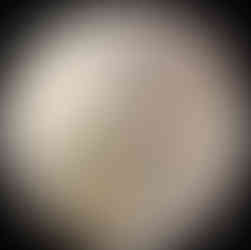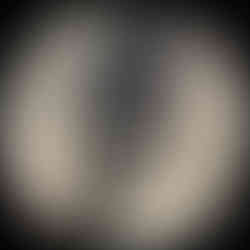Bell Copper Drills Copper Sulfide in Porphyry at Big Sandy
- Bell Copper
- Feb 2, 2022
- 4 min read
February 2, 2022
News Release
Bell Copper Corporation
Bell Copper Drills Copper Sulfide in Porphyry at Big Sandy
VANCOUVER, B.C. - Bell Copper Corporation (TSXV:BCU) (OTCQB:BCUFF)(“Bell Copper” or the “Company”) reports that it has drilled a supergene chalcocite (copper sulfide) deposit hosted by quartz porphyry at its Big Sandy project. Big Sandy is a large, truncated porphyry copper-molybdenum target located in northwestern Arizona, approximately 30 kilometers south of the Company’s Perseverance Project.
Highlights
BS-3 is now cutting chalcocite-pyrite mineralization in pervasively sericitized quartz porphyry cut by pyrite and quartz +/- molybdenite veinlets at an inclined depth of 1589 meters.
Disseminated chalcocite mineralization began at an inclined depth of 1303 meters beneath 111 meters of hematitic leached capping.
The 179-meter chalcocite-bearing interval from 1293-1472m has been sampled and shipped to the laboratory for copper assaying.
Geological logging, sawing, and sampling of the chalcocite-bearing interval from 1472-1589 meters is underway.
Drilling of BS-3 continues, and is encountering sparse but increasing quantities of disseminated chalcopyrite, which is variably coated by chalcocite.
Drilling and Analysis
Drillhole BS-3, which was oriented to test a 2400 meter by 2100 meter area of high electrical conductivity that was detected in an earlier Magneto-telluric survey (refer to news release dated October 6, 2020), passed out of gravel and into hematite-rich, pervasively sericitized quartz porphyry (i.e. “leached capping”) at an inclined depth of 1192 meters. The true thickness of the gravel layers penetrated by BS-3 at an oblique angle is estimated to be 860 meters. Disseminated chalcocite (copper sulfide) and pyrite was first encountered at an inclined depth of 1303 meters, immediately beneath leached capping. Chalcocite variably overprints predominantly pyritic mineralization from inclined depths of 1303m to at least 1589m, the current bottom of BS-3 (Figures A through C). Chalcocite mineralization in this 286-meter interval is interrupted by spotty jarosite-bearing shear zones lacking pyrite and chalcocite. No copper oxide minerals have been encountered in the ongoing intersection.
Figure A, B, and C. Core box photos representative of the 179 meters of supergene chalcocite mineralization in BS-3



Chalcocite (Cu2S, 80 percent by weight copper) is present as 1) steely black coatings surrounding disseminated pyrite, 2) partial to complete replacement of disseminated pyrite grains, and 3) partial to complete replacements of pyrite veins (Figures D through F). Minor amounts of bornite (Cu5FeS4, 65 percent by weight copper) have been seen rimmed by chalcocite in the center of particular pyrite veins. To date, only trace quantities of chalcopyrite (CuFeS2, 33 percent by weight copper) have been encountered, mainly in the deepest few meters of core. Sparse quartz-molybdenite veinlets appear to increase in abundance with depth in BS-3.
Figures D, E, and F. Photomicrographs of chalcocite in BS-3 core samples, field of view 5 millimeters in each.
D. Chalcocite forming steely black rims surrounding disseminated pyrite grains in strongly sericitized quartz porphyry.
E. Steely black chalcocite invading cracks and grain boundaries in pyrite vein.
F. Steely black chalcocite almost completely engulfing pyrite in veinlet
Oriented core collected near the base of the gravel cover shows that at BS-3 the porphyry system is tilted about 45 degrees from its orientation before faulting. This tilt suggests that the supergene copper blanket in BS-3 can be targeted at shallower depth in the direction of drillhole BS-1, located 1200 meters to the east. A 2-meter interval of chalcocite supergene enrichment underlying hematitic leached capping was cut at a depth of 936 meters in BS-1 (Figure G), suggesting continuity of supergene copper enrichment and porphyry-related alteration across a distance of 1200 meters. The intervening ground showed anomalously high electrical conductivity in the August 2020 magneto-telluric survey. A future drillhole is now contemplated to test that shallower target. Drillhole BS-2, located 2.3 kilometers southeast of BS-3, showed only trace amounts of chalcocite, spotty chalcopyrite (Figure H) and pyrite veins, and “fringy” propylitic alteration in Precambrian host rocks.

Figure G. Photomicrograph of chalcocite from BS-1 at of depth of 936 meters, located 1200 meters east of BS-3. Field of view 7 millimeters. Compare with identical rimming chalcocite texture in Figure D.

Figure H. Core sample from BS-2 showing spotty chalcopyrite mineralization in sericitized Precambrian granite. BS-2 is located 2.3 kilometers southeast of BS-3.
Tim Marsh, Bell’s President and CEO, and a Qualified Person as defined by NI43-101, said,
“Bell Copper continues to build on the discovery at Big Sandy, first announced in January 2020 with BS-1 cutting chalcocite, chalcopyrite, and molybdenite mineralization hosted by a strongly altered 74.2 Ma porphyry. Our original model of a decapitated, large copper-rich top to the Laramide Diamond Joe porphyry root, which concept also underpins the exploration target at our nearby Perseverance property, is being borne out in the ongoing Big Sandy drilling program. The Company intends to follow the copper outward and downward in BS-3 to a logical conclusion, and immediately follow up with a 500-meter step-out hole from the same drill pad. Meanwhile, we will construct a new drill site under our existing permits directly above the BS-3 intersection and mobilized a second drill to push down additional step out holes from that pad.”
About Bell Copper
Bell Copper is a mineral exploration company focused on the identification, exploration and discovery of large copper deposits located in Arizona. Bell Copper is exploring its 100% owned Big Sandy Porphyry Copper Project and the Perseverance Porphyry Copper Project which is under a Joint Venture - Earn In.
Qualified Person
The technical content of this release has been reviewed and approved by Timothy Marsh, PhD, PEng., the Company’s CEO and President. No mineral resource has yet been identified on the Big Sandy Project. There is no certainty that the present exploration effort will result in the identification of a mineral resource or that any mineral resource that might be discovered will prove to be economically recoverable.
On behalf of the Board of Directors of
Bell Copper Corporation
"Timothy Marsh"
Timothy Marsh, President, CEO & Director
For further information please contact the Company
Tel: 1 800 418 8250
Email: info@bellcopper.net
Neither the TSX Venture Exchange nor its Regulation Services Provider (as that term is defined in the policies of the TSX Venture Exchange) accepts responsibility for the adequacy or accuracy of this release.
Forward Looking Statements
This news release includes “forward-looking statements” and “forward-looking information” within the meaning of Canadian securities legislation. All statements included in this news release, other than statements of historical fact, are forward-looking statements. Forward-looking statements include predictions, projections and forecasts and are often, but not always, identified by the use of words such as "anticipate", "believe", "plan", "estimate", "expect", "potential", "target", "budget" and "intend" and statements that an event or result "may", "will", "should", "could" or "might" occur or be achieved and other similar expressions and includes the negatives thereof.
















Comments